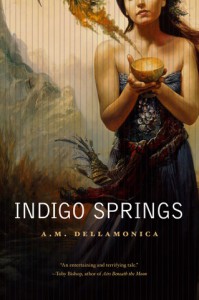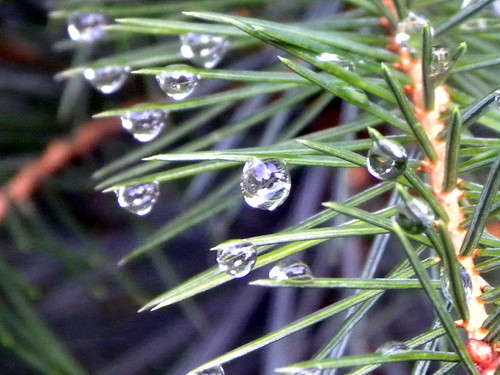It looks like my baby werewolf story, “The Cage,” is available on iTunes at last. I don’t know about Indigo Springs, but will check soon.
Category Archives: Fiction Online
New delivery systems for my stuff…
Folks have told me that my East Van lesbian werewolf romance, “The Cage,” made the Locus Recommended Reading list for 2010–I haven’t confirmed this with my eyeballs, but I hear that M.K. Hobson and Cat Rambo are on it too. Anyway, it was nice to hear and I want to cyber-hug all my friends and acquaintances who also made the list. (And, really, all my other friends and acquaintances too.)
In other news, Indigo Springs and “The Cage” are both available in an electronic bookstore called Diesel. I’m not sure how this works, formatwise, but they can be had. And they are both in the Sony Ebookstore now, too. iTunes is supposed to have them, but continues to lag behind.
It’s boggling, really, how many things have just become ours for the clicking.
Edited to add: The list is up again, here.
Story Intro: “The Children of Port Allain”
“The Children of Port Allain” is the example I pull out when someone asks me where I get my ideas… because I happen to remember exactly.
The story is a distorted vision of life on the rainy, forestry-dependent West Coast of B.C., this place:
It was back in the days when I still followed current events, which would put it before 2001. I would usually have CBC Radio One on for an hour or two when I was cooking or playing Asheron’s Call, and in that time I might catch the local news twice, as well as a national or international broadcast.
On one such occasion, the B.C. news had two stories back to back. The first was about a Vancouver Island town whose core employer, a pulp mill, was closing down. The town council was, therefore, wooing a medicinal marijuana operation to come in and set up shop, the idea being that the government-anointed pot growers would replace the lost jobs.
The second story was about a newly paroled pedophile who was getting hounded from town to town. He’d settle somewhere, there’d be an outcry, and eventually he’d try somewhere else.
“Where should these people go?” the interviewer asked one of the most recent hounders in this story.
“What do we care as long as it’s not here?” was the reply.
What happened, naturally, was my writerbrain came up with a mashup: the same desperate pulp-mill town, working up a scheme to create jobs by becoming a haven for paroled child molesters.
“The Children of Port Allain” is a prickly, uncomfortable story. There’s no overt violence in it, but it’s unsavory by design: if it was something you found in the back of your fridge, you’d imagine you could still smell it weeks later, even after giving your kitchen a nice bleach flambe. It’s about how kids live where their parents do, whether it’s next to a toxin-emitting mill or a prison; it’s not a great conspiracy, just a fact of life. It’s about the idea one hears lofted, sometimes, that anything is okay as long as one’s creating jobs. It wasn’t much of a surprise, once it was written, to find I had a little trouble finding it a home. But then I found myself at Norwescon on a panel where someone asked where my inspiration came from. I told the above anecdote and my friend, Derryl Murphy, who happened to be in the audience, said I should send it to On Spec.
“It’s too long,” I replied automatically. (Their word limit, then as now, is 6000 words.)
“Tell ’em I said it was okay,” Derryl said, and the eventual result was that the story appeared in their Summer 2003 issue.
One book, two book, new book, blue book…
 First, an exciting contest announcement: Favorite Thing Ever is giving away a copy of Indigo Springs. Entering is easy: surf here, leave a comment, and you’ll be in the running to win. No skill testing questions are involved.
First, an exciting contest announcement: Favorite Thing Ever is giving away a copy of Indigo Springs. Entering is easy: surf here, leave a comment, and you’ll be in the running to win. No skill testing questions are involved.
Speaking of skill-testing, I am embarking on a new novel this morning.
I had been thinking to write a couple more squid stories, to go with the three already published and the two that are about to hit the market. However, after a couple of weeks of thrashing around the Battle of Las Vegas, I’ve conclusively determined that my head’s not currently in the Proxy War. So, as an experiment, I switched over to detailed planning on THE RAIN GARDEN, my next mystery project. Things clicked immediately. Presto, plotto, kazam!–I have an outline.
My plan as of two weeks ago had been to blast through a very rough draft of this book in November, as a Nanowrimo thing. Barring fire, flood and the common cold, I find that two thousand words a day for thirty days (less a couple days off) is a pretty sustainable pace for me. But since I’m ready now I’m darnwell gonna start now, keeping the end-of-November finish date but moving at more of a 900-word daily target. That will leave time for days off, a visit to Alberta, and Orycon.
I like the sustained push-push-focus of Nanowrimo, but it does tend to leave me bug-eyed and gibbering well into December. And there’s no reason to hold off if I’m ready to write the book now.
So, hey! What are all of you working on this autumn?
Story Intro: “What Song the Sirens Sang”
“What Song the Sirens Sang” was commissioned by Xtra West, Vancouver’s queer newspaper, a couple of years ago. The paper was doing a special issue on the future of the local community and the Davie Village, which is where most of the local bars, Little Sisters bookstore, and the paper itself are based. As they were planning, someone asked: what if we get an SF writer to do a story? So the paper’s editor, Robin Perelle, reached out, and we agreed I’d write them a piece.
During the time prior to all this, there had been a couple gatherings–birthday parties, mostly–where the idea of a small group of friends potlucking its way through a disaster had been bandied about. All in fun, you understand. Nobody took it seriously, nobody built a bunker or hoarded food or actually tried to plan. It was one of those in-jokes that come up: Muffy will figure out how to sterilize water, Buffy will run the goat farm, Tuffy will learn to make brick walls, and so on. For this story, I imagined a global-climate-change-meets-falling-human-fertility type of eco-disaster, and then elevated the Potluck of the Apocalypse from a joke into a necessity-mothered creation. In this story, the world we know lives on only in remnants, and one of those is this thriving community of tough old queers from my age cohort.
I further imagined that this queer community, despite the ongoing need to put survival first, would maintain some of our important cultural traditions, even as it continued to embrace people regardless of gender, sexual orientation, or genetic mutation.
When I write about activist communities, I tend to celebrate what I like best in them: the way people can act in solidarity, the way these actions sometimes bring victory. I skip the endless tedious meetings, the drama, the arguing over semantics, the people who threaten to quit whenever something doesn’t go their way, the exhaustion, the burnout, and the soul-crushing defeats. “What Song the Sirens Sang,” (much like my more recent story, “The Cage“) is a rose-colored view of a complex and often fractious group process. It is grassroots activism dressed in its holiday best. These stories are about the times when everyone shows up, pulls together, and where–collectively and as individuals–we really are the people we imagine ourselves to be.



